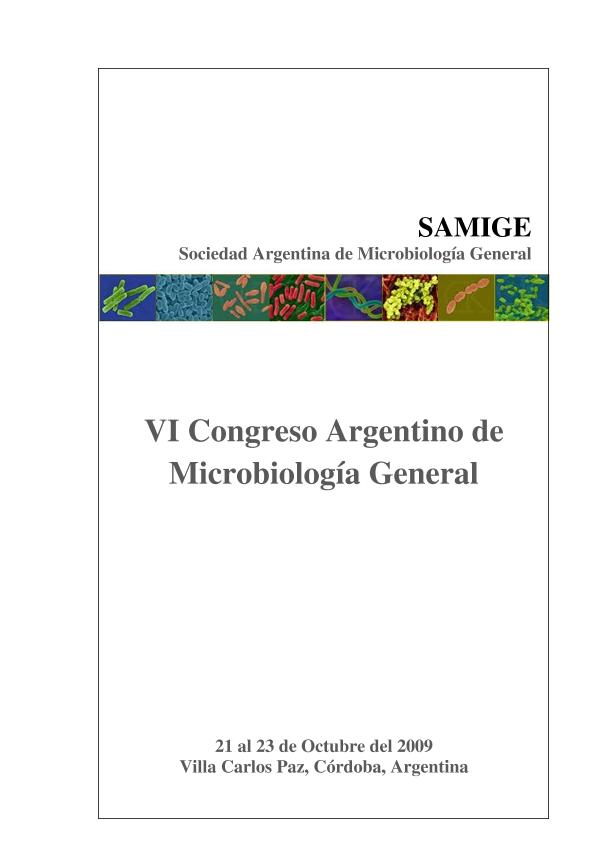Mostrar el registro sencillo del ítem
dc.contributor.author
Nally, Maria Cristina

dc.contributor.author
Pesce, Virginia Mercedes

dc.contributor.author
Toro, Maria Eugenia

dc.contributor.author
Castellanos, Lucia Ines

dc.contributor.author
Vazquez, Fabio

dc.date.available
2023-04-21T17:01:15Z
dc.date.issued
2009
dc.identifier.citation
Biocontrol of fungi from sour rot by volatiles produced by yeasts in table grapes; VI Congreso Argentino de Microbiología General; Villa Carlos Paz; Argentina; 2009; 63-64
dc.identifier.uri
http://hdl.handle.net/11336/194974
dc.description.abstract
Introduction: Sour rot is an important disease of grapes that affects both crop yield and wine quality. It is caused by a number of undesirable yeasts and bacteria, in association with fungi like Aspergillus, Penicillium and Rhizopus. Biocontrol of plant diseases with microbial antagonist has been developed as an alternative to fungicides. Objective: To evaluate the action of volatiles produced by wild enological yeast in biocontrol of fungi associated to sour rot disease of grapes. Material and Methods:a- Antagonist isolation: Yeasts were isolated from different sources such as healthy grapes, fermenting musts and enological environments.b-Fungi isolation: The pathogens were isolated from grapes berries with sour rot symptoms. c- Screening of antagonistic yeasts: In vitro, antagonism between fungi and yeasts was observed by placing both on the same Czapeck Agar plate and incubating at 25°C, for 5 days. Then, antagonist yeasts were evaluated in vivo: a wound at the equator of grapes berries was made. Aliquots (10 µl) of 106 CFU/ml yeast concentration followed by 10µl of fungal conidial suspension (10 4 CFU/ml) were seeded in the hole. d- Production of antifungal volatiles: Interaction tests consisted of the bottom part of a Petri- dish with the seeded yeast inverted on top of another bottom part containing a fungus, were sealed with Parafilm®, and incubated at 25°C. Fungal growth inhibition was determined when the diameter of the fungi decreased in comparison to the negative control. All experiments were repeated three times. Results: Aspergillus caelatus, A.carbonarius, A.versicolor, A.terreus, Penicillium comune, Rhizopus stolonifer and Ulocladium sp. were isolated. The screening in vitro of 234 isolated resulted in 95% of yeast with antagonistic activity and 63 isolates showed efficacy to inhibit the 7 grapes pathogens on in vitro test. From 63 isolates, 8 antagonist yeasts consistently produced antifungal volatiles, and inhibited mycelial growth of A.caelatus, A.carbonarius, A.terreus and P.comune. Volatiles produced by Kluyveromyces marxianus BKm153, Debaryomyces vanrijiae BDv197, Pichia guilliermondii BPg190, Saccharomyces cerevisiae BSc44 and BSc78 produced growth inhibition of A.terreus, although BKm153 showed the highest inhibition (48.66% ± 2.44). A.carbonarius was affected by the presence of volatiles produced by Candida sake BCs198, A.caelatus by S.cerevisiae BSc119 and P.comune by Candida versatilis BCv223. Conclusion: These results suggest that the production of antifungal volatiles from antagonistic yeasts play a significant role in mechanisms of biocontrol of fungal pathogens of grapes.
dc.format
application/pdf
dc.language.iso
spa
dc.publisher
Sociedad Argentina de Microbiología General
dc.rights
info:eu-repo/semantics/openAccess
dc.rights.uri
https://creativecommons.org/licenses/by-nc-sa/2.5/ar/
dc.subject
BIOCONTROL
dc.subject
FUNGI
dc.subject
SOUR ROT
dc.subject.classification
Biología Celular, Microbiología

dc.subject.classification
Ciencias Biológicas

dc.subject.classification
CIENCIAS NATURALES Y EXACTAS

dc.title
Biocontrol of fungi from sour rot by volatiles produced by yeasts in table grapes
dc.type
info:eu-repo/semantics/publishedVersion
dc.type
info:eu-repo/semantics/conferenceObject
dc.type
info:ar-repo/semantics/documento de conferencia
dc.date.updated
2023-04-11T12:10:41Z
dc.journal.pagination
63-64
dc.journal.pais
Argentina

dc.description.fil
Fil: Nally, Maria Cristina. Consejo Nacional de Investigaciones Científicas y Técnicas; Argentina. Universidad Nacional de San Juan. Facultad de Ingeniería. Instituto de Biotecnología; Argentina
dc.description.fil
Fil: Pesce, Virginia Mercedes. Consejo Nacional de Investigaciones Científicas y Técnicas; Argentina. Universidad Nacional de San Juan. Facultad de Ingeniería. Instituto de Biotecnología; Argentina
dc.description.fil
Fil: Toro, Maria Eugenia. Universidad Nacional de San Juan. Facultad de Ingeniería. Instituto de Biotecnología; Argentina
dc.description.fil
Fil: Castellanos, Lucia Ines. Consejo Nacional de Investigaciones Científicas y Técnicas. Centro Científico Tecnológico Conicet - Tucumán. Planta Piloto de Procesos Industriales Microbiológicos; Argentina. Universidad Nacional de Tucumán. Facultad de Bioquímica, Química y Farmacia; Argentina
dc.description.fil
Fil: Vazquez, Fabio. Universidad Nacional de San Juan. Facultad de Ingeniería. Instituto de Biotecnología; Argentina
dc.relation.alternativeid
info:eu-repo/semantics/altIdentifier/url/https://samige.org.ar/wp-content/uploads/2022/10/Libro-SAMIGE-2009.pdf
dc.conicet.rol
Autor

dc.conicet.rol
Autor

dc.conicet.rol
Autor

dc.conicet.rol
Autor

dc.conicet.rol
Autor

dc.coverage
Nacional
dc.type.subtype
Congreso
dc.description.nombreEvento
VI Congreso Argentino de Microbiología General
dc.date.evento
2009-10-21
dc.description.ciudadEvento
Villa Carlos Paz
dc.description.paisEvento
Argentina

dc.type.publicacion
Book
dc.description.institucionOrganizadora
Sociedad Argentina de Microbiología General
dc.source.libro
Libro de resúmenes del VI Congreso Argentino de Microbiología General
dc.date.eventoHasta
2009-10-23
dc.type
Congreso
Archivos asociados
